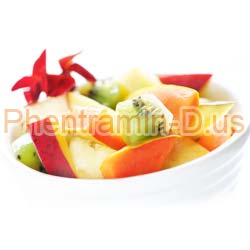Some believe, and rightfully so, that some of the problems we have with dieting and overall digestive health are a direct result of eating the wrong foods at the wrong times, and without thought to what we are eating. That makes sense, as the digestive system can easily be upset with the wrong foods. At times, the wrong foods are the biggest reason why we carry extra weight. Those with these beliefs feel that something called ‘food combining’ is a great way to address and fix a few of these problems.

Food combining is a way of eating that combines certain foods together in order to gain their maximum nutritional benefit.
Food combining may be more about your digestive health rather than your dieting endeavor, but one problem may lead to the other. If you experience regular heartburn and take a lot of antacids, or if you have some form of IBS (Irritable Bowel Syndrome) or other problem with the digestive system, it might be the foods you eat and how you eat them. If you follow the rules of food combining, your body should have an easier time digesting each meal, and will also draw all of the nutrients it needs from your foods. At times, because of bad food choices, these can slip right through without being absorbed.
The guidelines to food combining can be a bit confusing at first, but you will learn as you go, especially if you see improvement and you want to keep going. You have to learn more about the foods you eat so you can pair them in the right groups and put them into the right categories. For example, one basic of food combining is that you should have all acidic foods in one meal, and then all starches in a different meal. You should only eat one protein per meal. You have to learn what foods fall into those categories in order to do the food combining eating plan correctly.
When food combining, you should eat fats and proteins in different meals, and this is due to the different amounts of times these foods take to digest. Some fats can take hours to digest, thus they should not be eaten with other types of foods. Meats and fruits should be eaten at different times because of the same reason. It is recommended that no desserts are eaten at all on this plan, especially after a meal. They sit there and turn into an indigestible mess.
One of the most important aspects of food combining is how you chew, believe it or not. This is something you can incorporate into almost any eating plan. The foods should be chewed until they are almost a liquid or mash. This helps digestion because the foods are already partially broken down before they get to the stomach and intestines. For example, eating foods that are high in fiber is great, but the strong fiber cells can trap nutrients. To gain the most benefit from eating high fiber foods you must chew it thoroughly to breakdown the stronger cells and make the nutrients available for absorption. Making sure to chew your foods thoroughly is also a great way to slow down the rate at which you eat your meals, which is known to help decrease appetite.


Recent Comments